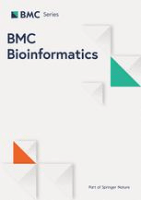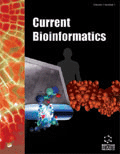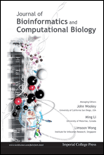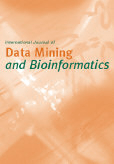
BMC BIOINFORMATICS
Scope & Guideline
Transforming Biological Research with Cutting-Edge Computational Tools.
Introduction
Aims and Scopes
- Computational Methods Development:
The journal publishes works that introduce novel computational algorithms and tools aimed at solving complex biological problems, including protein structure prediction, genomic data analysis, and systems biology modeling. - Data Integration and Analysis:
It emphasizes methodologies for integrating diverse biological datasets, such as genomics, transcriptomics, proteomics, and metabolomics, to provide comprehensive insights into biological systems. - Machine Learning and AI Applications:
BMC Bioinformatics features research that applies machine learning and artificial intelligence techniques to predict biological outcomes, including drug interactions, disease associations, and genetic variations. - User-Friendly Software and Tools:
The journal highlights the development of user-friendly software and web applications that facilitate bioinformatics analyses, making advanced methodologies accessible to biologists and researchers. - Case Studies and Applications:
Research showcasing practical applications of bioinformatics tools in real-world biological contexts, such as cancer genomics, microbiome studies, and drug discovery, is a core focus.
Trending and Emerging
- Deep Learning Techniques:
There is a significant rise in the application of deep learning methods for various bioinformatics tasks, including protein structure prediction, drug interaction modeling, and genomic data analysis, indicating a trend towards more sophisticated analytical approaches. - Multi-Omics Integration:
Research integrating multiple omics layers (genomics, transcriptomics, proteomics, etc.) is gaining traction, as it allows for a more comprehensive understanding of biological systems and disease mechanisms. - Network-Based Approaches:
Emerging studies are increasingly employing network-based methods to analyze complex interactions within biological systems, such as protein-protein interactions and gene regulatory networks. - Personalized Medicine Applications:
There is a growing emphasis on bioinformatics research that supports personalized medicine, including the development of predictive models for patient-specific treatment responses based on genomic data. - Visualization and Data Exploration Tools:
The demand for advanced visualization tools and platforms for exploring complex biological data is on the rise, reflecting the need for intuitive interfaces that facilitate data interpretation and discovery.
Declining or Waning
- Traditional Statistical Methods:
There has been a noticeable decrease in publications focused solely on traditional statistical methodologies, as the field increasingly favors machine learning and computational approaches that offer more robust predictive capabilities. - Basic Bioinformatics Tools:
The publication of basic or general bioinformatics tools has waned, with a growing emphasis on specialized applications that address specific biological questions or challenges. - Single-Omics Studies:
Research centered on single-omics analyses (e.g., genomics alone) is becoming less prominent, reflecting a shift towards integrative multi-omics approaches that provide a more holistic view of biological processes. - Static Data Analysis:
There is a decline in studies that focus on static data analysis without dynamic modeling or predictive elements, as the field moves towards more interactive and adaptive analytical frameworks. - Descriptive Studies:
The journal has seen fewer descriptive studies that do not employ advanced computational methods, as the trend shifts towards hypothesis-driven research that utilizes innovative analytical techniques.
Similar Journals

Biocybernetics and Biomedical Engineering
Unleashing the Potential of AI in HealthcareBiocybernetics and Biomedical Engineering, published by ELSEVIER in the Netherlands, is a prestigious journal that stands at the forefront of the intersecting fields of biomedical engineering and artificial intelligence. With an impressive Impact Factor that places it in the Q1 category for Biomedical Engineering, this journal not only ranks 17th out of 303 in Scopus but also boasts a remarkable percentile ranking of 94th, highlighting its influence and relevance within the scientific community. Since its inception in 2008, Biocybernetics and Biomedical Engineering has aimed to publish cutting-edge research that integrates principles of cybernetics with technological advancements in health care, thereby fostering innovations that improve patient outcomes. Dedicated to advancing knowledge in biomedical technology, the journal serves as a vital resource for researchers, professionals, and students seeking to explore the latest developments and methodologies in the field.

Current Bioinformatics
Exploring Interdisciplinary Approaches to Biological DataCurrent Bioinformatics, an esteemed journal published by Bentham Science Publishers Ltd, serves as a pivotal platform for the dissemination of cutting-edge research in the fields of bioinformatics, biochemistry, computational mathematics, genetics, and molecular biology. With an ISSN of 1574-8936 and an E-ISSN of 2212-392X, this journal has established itself as a vital resource for researchers, professionals, and students keen on exploring interdisciplinary approaches to biological data analysis. Its prominence is reflected in its quartile rankings for 2023, where it stands in Q3 for biochemistry and computational mathematics, alongside Q4 rankings in genetics and molecular biology. Current Bioinformatics, located in the United Arab Emirates and converging from 2007 to 2024, aims to foster innovation in the field by presenting original research articles, reviews, and case studies that drive forward our understanding of complex biological systems through computational techniques. This journal is an integral resource for those wishing to stay at the forefront of bioinformatics research and applications.

Chem-Bio Informatics Journal
Fostering Interdisciplinary Insights in Chemoinformatics and BioinformaticsChem-Bio Informatics Journal is a dedicated platform for the dissemination of innovative research in the intersecting realms of biochemistry and computational science. Published by the CHEM-BIO INFORMATICS SOC in Japan, this journal embraces the rapidly evolving field of chemoinformatics and bioinformatics, fostering scholarly communication among researchers, professionals, and students alike. With its ISSN: 1347-6297 and E-ISSN: 1347-0442, the journal continues to enrich the scientific community by offering insights into novel methodologies and applications that bridge chemistry and biology. Although currently positioned in the fourth quartile in the biochemistry category according to Scopus rankings, contributing to this journal provides an invaluable opportunity for authors to showcase impactful findings that could resonate within the field. The journal is particularly committed to supporting interdisciplinary research that addresses complex biological problems through computational modeling and data analysis. By publishing high-quality and peer-reviewed articles, Chem-Bio Informatics Journal aims to enhance the scientific discourse and is poised to become a pivotal resource for advancing the frontiers of biochemistry and molecular biology.

GENOMICS PROTEOMICS & BIOINFORMATICS
Advancing the frontiers of molecular life sciences.GENOMICS PROTEOMICS & BIOINFORMATICS, published by Elsevier, stands at the forefront of cutting-edge research in the fields of genomics, proteomics, and bioinformatics. This esteemed journal, with an impact factor reflecting its significant influence, has embraced an Open Access model since its inception in 2003, ensuring that knowledge is freely accessible to a global community of researchers, professionals, and students. Based in China, it has been recognized for its exemplary contributions, achieving Q1 quartile rankings in major categories such as Biochemistry, Computational Mathematics, Genetics, and Molecular Biology as of 2023. Moreover, its commendable Scopus rankings position it among the top journals in its fields, with outstanding percentile performances that highlight its scholarly impact. As it continues to converge from 2003 to 2024, the journal aims to foster innovation and collaboration, making it an essential platform for disseminating vital insights and advancements in molecular life sciences.

Cancer Informatics
Bridging the Gap Between Data and Cancer SolutionsCancer Informatics, published by SAGE PUBLICATIONS LTD, is a leading open-access journal dedicated to the integration of computational techniques and cancer research. Since its inception in 2005, this journal has become a vital resource for researchers, professionals, and students interested in the intersection of informatics and oncology. With an E-ISSN of 1176-9351 and a focus on the innovative application of data analysis in cancer research, Cancer Informatics serves to disseminate critical findings that aid in understanding cancer biology and enhancing treatment modalities. Recognized in the Q3 category for both Cancer Research and Oncology according to the 2023 metrics, it currently holds a Scopus ranking of #246 in Medicine _ Oncology and #172 in Biochemistry, Genetics and Molecular Biology _ Cancer Research, indicating its contribution to ongoing research in these fields. This journal not only supports open access to scientific findings but also aims to foster collaboration among interdisciplinary scholars worldwide, making it an essential platform for advancing the field of cancer informatics through cutting-edge research and innovative methodologies.

PROTEOMICS
Transforming theoretical insights into practical applications.PROTEOMICS is a leading journal focused on the rapidly evolving field of proteomics, published by WILEY in Germany. With a solid reputation established since its inception in 2001, it has continually contributed to the understanding of protein functions and interactions within biological systems. As part of its commitment to academic excellence, PROTEOMICS is ranked in the second quartile for both Biochemistry and Molecular Biology categories (2023), reflecting its significant influence in advancing research in these areas. Although it does not currently provide open access options, it remains a vital resource for researchers, professionals, and students keen to explore innovative methodologies and findings in proteomic research. By publishing groundbreaking studies that bridge theoretical knowledge with practical applications, PROTEOMICS plays a crucial role in enhancing our understanding of molecular processes and driving forward advancements in the life sciences.

PLoS Computational Biology
Driving Innovation in Cellular and Molecular NeurosciencePLoS Computational Biology is a premier open-access journal published by the Public Library of Science, committed to advancing the understanding of complex biological data through computational approaches. Since its inception in 2005, the journal has made significant strides in the fields of Cellular and Molecular Neuroscience, Computational Theory and Mathematics, Ecology, Genetics, and Molecular Biology, achieving a notable Q1 ranking in various categories as of 2023. With an exceptional impact factor and an esteemed ranking—such as Rank #23/176 in Computational Theory and Mathematics—PLoS Computational Biology provides a vital platform for researchers, professionals, and students to disseminate their cutting-edge findings and insights. The journal's open-access model ensures that high-quality research is freely accessible worldwide, fostering collaboration and innovation across disciplines. Located in San Francisco, CA, it serves as a hub for the global scientific community, making it an indispensable resource for anyone at the forefront of computational biology and its diverse applications.

Journal of Bioinformatics and Computational Biology
Empowering Research Through Computational InsightsThe Journal of Bioinformatics and Computational Biology, published by WORLD SCIENTIFIC PUBL CO PTE LTD, serves as a significant platform for disseminating innovative research in the dynamic fields of bioinformatics and computational biology. With an ISSN of 0219-7200 and an E-ISSN of 1757-6334, this journal facilitates the exchange of ideas and advancements from its inception in 2003 and continues to be pivotal through 2024. Despite its classification in the lower quartiles—Q4 in Biochemistry and Q4 in Molecular Biology, along with Q3 in Computer Science Applications—the journal remains a valuable resource for researchers and students alike, as it emphasizes interdisciplinary approaches essential for tackling complex biological problems through computational methods. Located in Singapore, the journal encourages submissions of high-quality, peer-reviewed articles that offer insights into computational techniques that empower biological research. Although this journal does not offer open access options, its contributions to research are increasingly recognized across various academic platforms. As the field evolves rapidly, this journal continues to attract a growing readership, making it an essential reference point for anyone interested in the intersection of biology and computer science.

International Journal of Data Mining and Bioinformatics
Advancing Knowledge in Data Mining and Bioinformatics.The International Journal of Data Mining and Bioinformatics, published by InderScience Enterprises Ltd, stands as a crucial platform for researchers and professionals dedicated to the intersection of data science and biological informatics. With its ISSN 1748-5673 and E-ISSN 1748-5681, this journal captures the essence of innovative research from 2006 to 2024. Though indexed in the Q4 category for Biochemistry, Genetics and Molecular Biology and Information Systems, it maintains a respectable Q3 status in Library and Information Sciences, reflecting its growing influence within the academic community. The journal also provides insightful contributions to the fields of big data analytics, machine learning, and computational biology. Although it is not currently an open-access journal, its relevance is underscored by its Scopus rankings, indicating a solid standing in the disciplines it encompasses. Researchers, students, and practitioners in data mining and bioinformatics are encouraged to explore the findings and methodologies presented, paving the way for future innovations in this dynamic field.

Frontiers in Bioinformatics
Fostering Collaboration for Breakthrough DiscoveriesFrontiers in Bioinformatics is a leading academic journal dedicated to advancing the field of bioinformatics by publishing high-quality research and review articles. Published by FRONTIERS MEDIA SA, this open-access journal aims to foster innovative research, promote collaborative initiatives, and provide a platform for the dissemination of findings related to computational biology, biostatistics, and the intersection of bioinformatics with other biological disciplines. With a focus on promoting accessibility and visibility of research, Frontiers in Bioinformatics operates under a rigorous peer-review process, ensuring that all published content meets the highest academic standards. The journal has shown a commendable rank across various Scopus categories, including Mathematics, Computational Mathematics, and multiple dimensions of Biochemistry and Molecular Biology, indicating its relevance and impact within the research community. Researchers, professionals, and students will find this journal invaluable for staying abreast of the latest developments and breakthroughs in bioinformatics, enhancing their studies and professional projects.